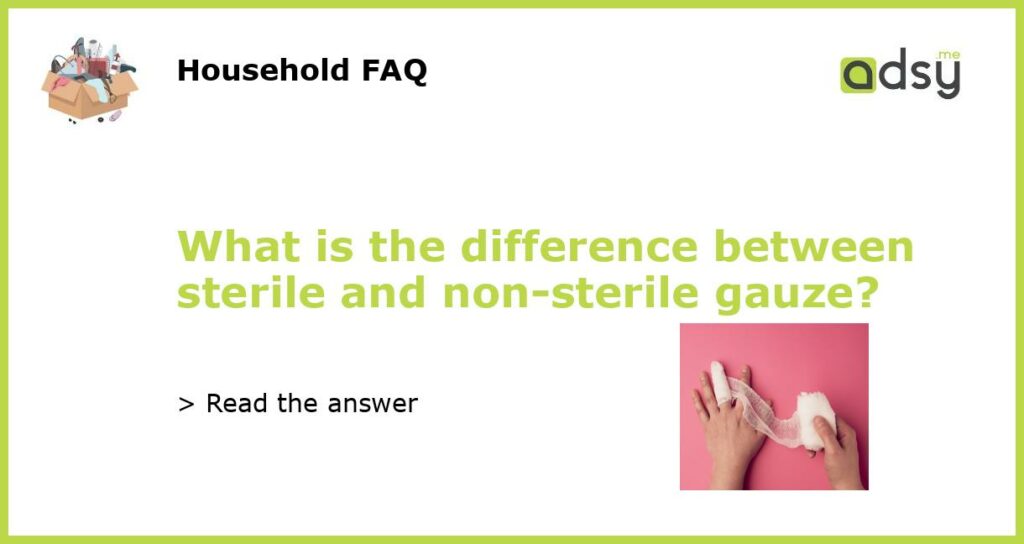Sterile vs. Non-Sterile Gauze: Understanding the Difference
Gauze is a versatile medical material that is used in wound care, surgical procedures, and various other applications. It is available in both sterile and non-sterile forms, but what exactly is the difference between the two? In this article, we will explore the distinctions between sterile and non-sterile gauze, their uses, and the implications for patient care.
Sterile Gauze: A Fundamental Requirement in Medical Settings
Sterile gauze refers to gauze that is free from any microorganisms and is packaged in a way that ensures it remains sterile until the package is opened. This is achieved through a process known as sterilization, which eliminates contaminants such as bacteria, viruses, and fungi. Sterile gauze is an essential component of medical practice as it reduces the risk of infection, particularly in wound care and surgical procedures.
Sterilization methods commonly used for gauze include steam autoclaving, ethylene oxide gas, and gamma irradiation. These methods kill or remove microorganisms, rendering the gauze sterile. Once the gauze has been sterilized, it is typically individually wrapped in a sterile package to maintain its sterility until it is needed.
Non-Sterile Gauze: Widely Used in First Aid and General Purpose Applications
Non-sterile gauze, as the name suggests, is gauze that has not undergone the sterilization process. It may still be clean and free from visible dirt, but it is not devoid of microorganisms. Non-sterile gauze is commonly used in first aid and general-purpose applications where sterility is not a critical factor.
Non-sterile gauze is often used for cleaning wounds, applying ointments or creams, and providing cushioning or padding. In settings where cleanliness is important but the risk of infection is low, such as minor cuts or scrapes, non-sterile gauze can be a suitable option. It is cost-effective and readily available, making it a popular choice for non-medical professionals and home use.
Uses of Sterile Gauze in Medical Practice
Sterile gauze plays a crucial role in various medical procedures, including:
- Wound Care: Sterile gauze is used to clean wounds, apply antiseptic solutions, and absorb excess fluids. It creates a sterile barrier that helps prevent infection and facilitates the healing process.
- Surgical Procedures: Sterile gauze is used during surgeries to control bleeding, absorb fluids, and protect delicate tissues. It is essential for maintaining a sterile field and minimizing the risk of surgical site infections.
- Dressing Changes: Sterile gauze is used to cover incisions, ulcers, burns, and other open wounds. It provides a clean environment that promotes healing and reduces the risk of contamination.
The Advantages and Disadvantages of Sterile and Non-Sterile Gauze
Both sterile and non-sterile gauze have their advantages and disadvantages, depending on the specific application:
- Sterile Gauze: The main advantage of sterile gauze is its ability to provide a sterile environment. This is critical in situations where preventing infection is paramount. However, sterile gauze tends to be more expensive and less readily available than non-sterile gauze.
- Non-Sterile Gauze: The main advantage of non-sterile gauze is its cost-effectiveness and availability. It can be used for a wide range of purposes, including general wound care and first aid. However, it may not be suitable for situations where sterility is crucial.
Choosing the Right Gauze for Your Needs
When selecting gauze for specific purposes, it is important to consider the level of sterility required. In medical settings, sterile gauze is the go-to option for wound care and surgical procedures where infection control is essential. Non-sterile gauze, on the other hand, is suitable for general first aid and minor wounds that have a low risk of infection.
Regardless of whether you choose sterile or non-sterile gauze, it is important to follow proper wound care protocols and maintain hygienic practices. By using the appropriate gauze for each situation, you can effectively manage wounds and promote optimal healing.






